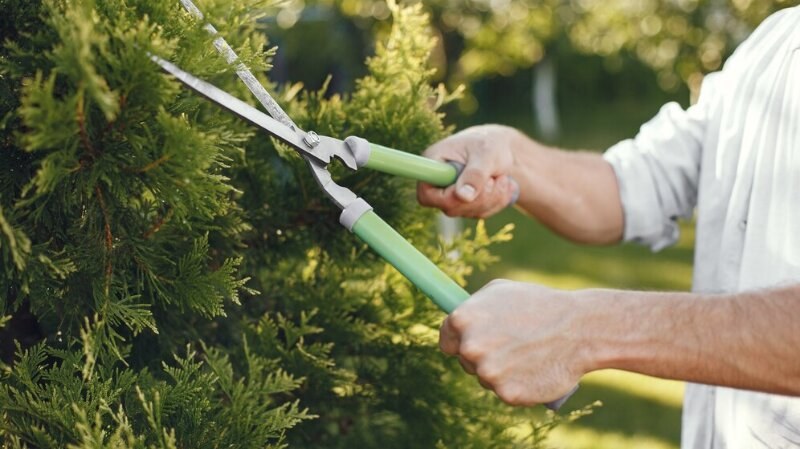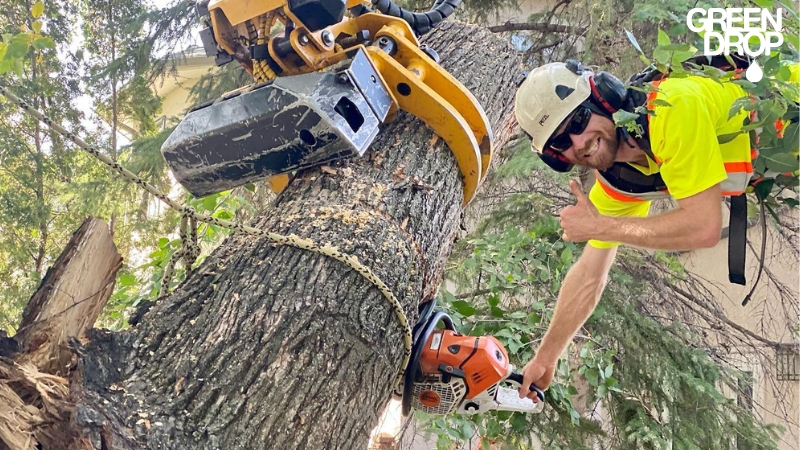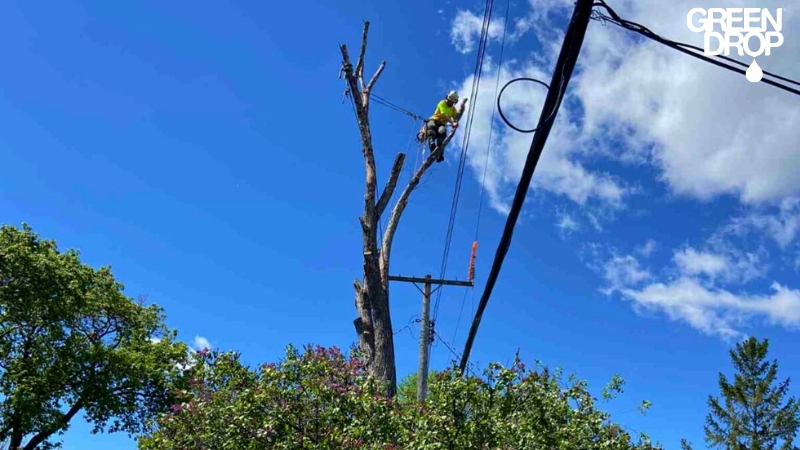Identifying Signs That Your Trees in Saskatoon Need Trimming
Reading time: 6 minutesTrees need regular care to stay healthy and look beautiful. Without adequate amounts of water, oxygen, and nutrients, they can easily succumb to common environmental elements and tree diseases. One important part of taking good care of your trees is trimming. Regular tree trimming is essential for good health; it keeps them from becoming overgrown and unruly.
However, trimming must be done correctly to prevent damage to the tree.
Keep reading to learn the signs your tree may be ready to trim, correct trimming practices, and when to reach out to a certified arborist for professional help.

Why Is Tree Trimming So Important?
Properly trimming your trees is a lot like getting a haircut. It removes extra material, creates space for healthy growth, and improves the tree's overall look. This differs from tree pruning, which aims to remove dead, dying, or diseased branches. Pruning is more related to a tree’s health, while trimming focuses largely on aesthetics.
Proper trimming techniques also help ensure even weight distribution among tree branches and reduce the risk of premature breaking or overgrowth. They encourage the tree to develop a strong foundational structure, which helps protect it from high winds and storm damage.
Trim Carefully!
When trimming your tree, it's always best to remember that less is more. The more you trim away, the more stress it can cause. The best course of action is to know which branches to trim ahead and make sure you strategically remove the correct ones. You should avoid trimming any more than 35% of your tree at a single time to maintain your tree’s overall health.
Properly trimmed tree branches will form a hard callous where the limb was removed. This protects the exposed area and minimizes entry points for insects and bacteria. Trimming tools should also be sanitized well between each incision to prevent the spread of pathogens from one part of the tree to another.
In most cases, trees generally only need to be trimmed every few years. However, some tree varieties grow more quickly and require more frequent care. Your arborist will examine your trees and recommend a trimming schedule designed to maximize their health and beauty.
Top Signs It’s Time to Trim Your Trees

Not sure whether you should make the cut? It can be challenging to tell if your tree requires trimming, especially in the spring when it starts filling out with leaves. That said, here are some easy indicators that can let you know it’s time to reach out to an experienced tree services professional for help:
1. Branches Are Growing Unevenly
Trees that have too many branches on one side versus the other can start to lean, potentially causing limbs to break off or the tree to be uprooted from the ground. Storms can exacerbate the situation, with heavy winds, rain, and snow putting more strain on already buckling branches.
Trimming can be an easy remedy if you notice that your tree’s limbs are growing unevenly or lopsided. You can cut extra branches away from the heavier side to improve their appearance and redistribute the weight of the branches across the entire tree to prevent leaning.
2. Branches Cross One Another
Tree branches that cross over each other are another sure indication that a tree should be trimmed. Not only do crossing branches mar a tree's uniform look, but they can also rub up against each other in the wind, resulting in potential breakage.
It also causes wounds in the tree park that are magnets for pests and microorganisms, and if left alone to continue growing, crossing branches can wind around each other and cause a structural defect that is much harder or even impossible to remove.
3. Foliage Is Too Dense for Air and Light Penetration
Can you see light peeking through the branches of your trees? If you can’t, chances are your foliage is too thick for light and air to reach the leaves. Tree branches should be spaced out well so the breeze can flow through since densely packed foliage is another attractor of unwanted insects, fungi, and bacteria.
Trimming dense trees can be tricky though, especially if you aren’t sure what you’re doing. You may have difficulty determining which branches need to be trimmed or end up with a lopsided shape when you’re finished. A professional arborist knows how to identify the right branches to remove and where to cut them so your tree is left with a gorgeous, uniform appearance.
4. There Are Branches Close to Cable or Power Lines
If your tree is growing over a power line or is getting too close to cables that provide internet or electricity to your house, these need to be trimmed back as soon as possible. However, it’s important to understand this practice isn’t something the average person can do themselves without adequate safety training and licensing.
Live power lines are extremely dangerous and can cause serious injury if mishandled. A qualified arborist understands how to work around power lines and what tools to use to ensure they remain safe while doing their job.
When to Trim Your Trees
Trimming your trees is best done when they are dormant or in their slowest growth period. This is generally in late fall or winter in Saskatoon and other areas in Western Canada.
Tree dormancy also coincides with the inactive period of most disease-spreading insects, meaning there will be fewer for your newly trimmed tree to contend with. All of this works together to protect your trees from potential harm that can be caused by improper trimming.
While trimming can help trees grow in the right direction, you should avoid it with young trees still working on establishing themselves. Ideally, trees younger than two years old should only be lightly trimmed, if at all. You should also wait to trim flowering trees until after blooming to avoid damaging buds.

How Our Saskatoon ISA-Certified Arborists Can Help
When you work with Green Drop’s ISA-certified arborists, you can be confident that your Saskatoon trees are in excellent hands. We understand local regulations and bylaws that may apply to you and can help ensure your trimming is done with compliance in mind.
In addition to tree trimming services, we offer complete tree health care packages designed to protect them from roots to crown. You’ll never have to worry about whether it’s time to trim, prune, fertilize, or protect against pests—we take care of it all.
Our packages include:
- Beautiful Bronze – Basic – 2 annual pest and disease preventative treatments
- Beautiful Silver – Plus – 3 annual pest and disease treatments
- Beautiful Gold – Premium – 4 annual pest and disease treatments (applied quarterly)
All of our tree care packages also come with a comprehensive landscape review and RootBoost™️ deep root fertilization treatments to ensure your trees get the nutrients they need for healthy growth. With easy monthly payments, we make keeping your trees healthy simpler than ever.
Are your trees in need of a good trim? Schedule your free tree care assessment with our ISA Certified Arborists.
Our tree specialists also serve Winnipeg, Calgary, Edmonton, Red Deer, Regina, and surrounding areas in Western Canada.

